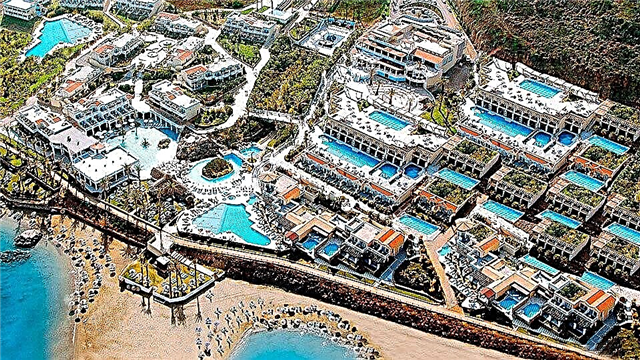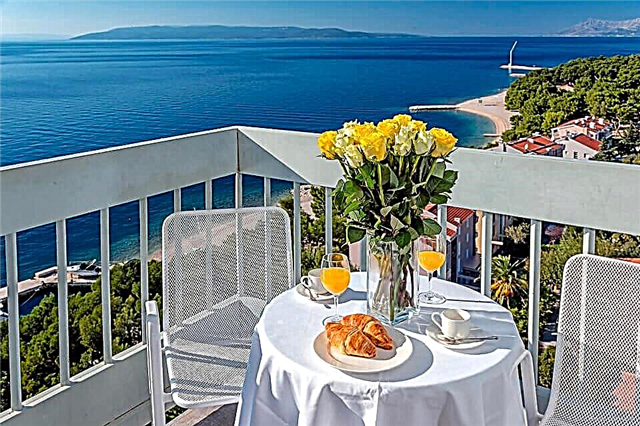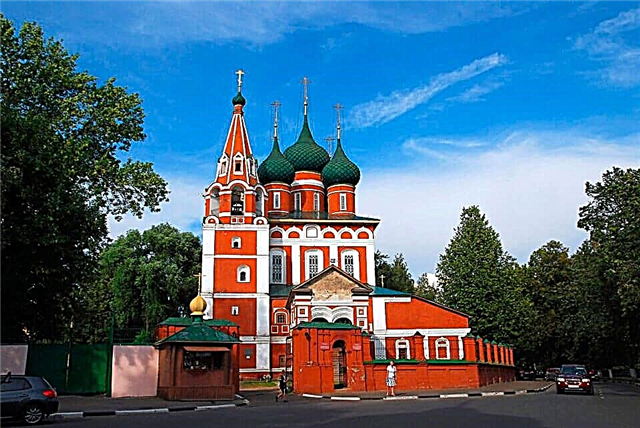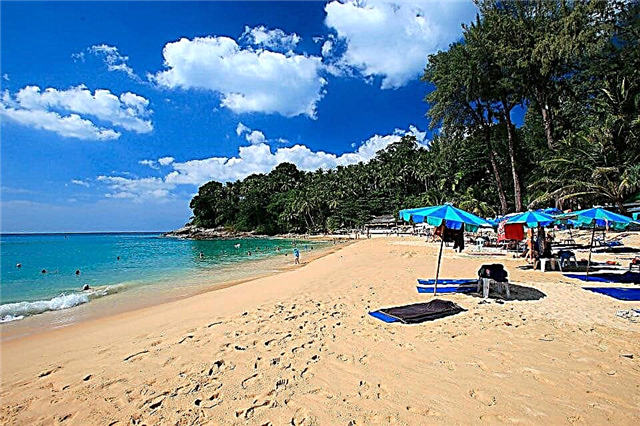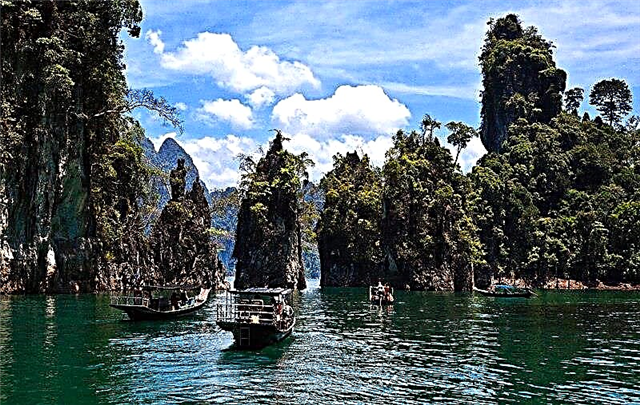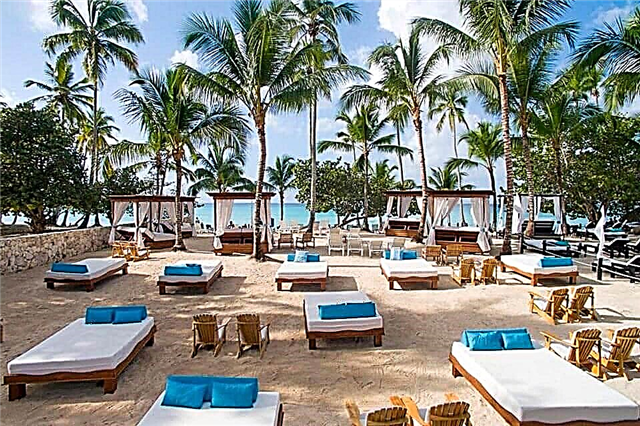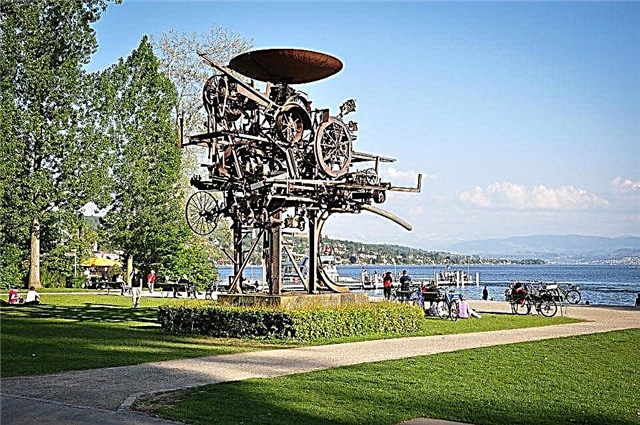The capital of the Czech Republic - Prague is called a fabulous city, conquering with Gothic castles, Baroque palaces, medieval cathedrals and bridges. It enchants with the magical atmosphere of squares and picturesque parks. Here you want to endlessly walk around the Prague Castle, which combines the architectural styles of many centuries. And how not to visit the romantic Mala Strana quarter, with streets lined with baroque houses, reminiscent of a fabulous scenery and palace and park ensembles? Once in the capital of the Czech Republic in transit or on a one-day trip, you involuntarily ask yourself: what to see in Prague in 1 day on your own, so as not to lose sight of the significant historical sites of the city. Perhaps the description of the most interesting sights will help you plan a self-guided tour of Old Prague.
Strahov Monastery

Let's say you booked a hotel in the Brevnov area, Praha 6. Leave the hotel and walk to the nearest stop. Take the tram to Pogorzhelets Square. Important: do not forget to validate the pass when entering public transport. You only need to do this once. Then make sure that the ticket is always with you.
Now you need to go back a little from the stop. On the way, be sure to pay attention to the monument to astronomers Tycho Brahe and Johannes Kepler. Next, confidently and at ease pass the crowds of tourists and enter the Strahov Monastery, which belongs to the order of monks-premonstrants and is open to visitors every day from 9:00 to 17:00.
The history of the Strahov Monastery is closely connected with the history of the city. Its origin dates back to 1140, when the first building was erected on this territory. Since then, the monastery has expanded and rebuilt, changing the Gothic architecture to Baroque and Renaissance styles. Entering the monastery gates, you immediately find yourself in the Strahov Garden, founded in the 17th century. After entering the courtyard of the monastery, stop in front of a stone pillar topped with a statue of St. Norbert.
Close to the pillar, the snow-white basilica of the Assumption of the Virgin Mary rushes to the sky with two towers, notable for its interior, decorated with reliefs and side altars. The holy monastery is proud of a museum of national literature and a library that has collected 130 thousand volumes and 2500 old manuscripts, first printed editions and graphic sheets. In the library you will be interested in the room of curiosities - the cabinet of curiosities of unusual natural collections.
Tourists usually strive to get to the Strahov Art Gallery, which was opened in the 18th century. It presents more than 1000 works of European painting of the XIV-XX centuries in the styles of Gothic, Rococo and Baroque. The gallery is located in the building of the former parliament, made in the style of Romanesque architecture. The interior of the halls of the gallery is remarkable for the ceilings and walls decorated with paintings.
To see all the beauty of the city, you should not crowd with groups of tourists, it is better to sneak past them unnoticed and walk down about 20 meters along an asphalt path. That's it, now you can stop and enjoy the splendor of the city view. There are some awesome photos to take here. Now you need to digest the experience, so head back to the monastery and be sure to buy the dark brown St. Norbert beer from the local brewery Klasterni Pivovar Strahov. Sit at a table in the courtyard, take a deep breath and exhale, enjoy the moment, because there are still so many interesting places ahead and you will see all this today.

Attentive tourists will certainly notice a diagram of the brewing process on the wall and napkins. If you have rested a little, then it's time to go further and go down to the "Scene of fire" - Pohorelec (Pohorzhelec).
Prague Loreta

In the 17th century. by order of Baroness Lobkovetskaya, a copy of the hut of the Virgin Mary was built. The original building, where, according to legend, the Mother of God lived, is located in the town of Loreto in Italy. The construction of the Prague analogue was carried out by the Italian architects D. Orsi and A. Allio. In the 18th century. the façade was decorated in a Baroque style under the direction of the Dientzenhofer father and son. The interior decoration is made using stucco technique. The wall frescoes correspond to the Rococo style. The patroness of Prague's Loreta donated an ebony altar to the church. The treasury of the temple contains a silver bowl (16th century) and a monstrance "Prague Sun", decorated with gems (17th century).
In addition to the Holy Hut, the Loreta ensemble includes 6 chapels, 2 fountains, a clock tower - carillons.
Time to visit:
- in winter (November 1 - March 31) daily 9.30 am - 4 pm
- in the summer (April 1 - October 31) daily 9 - 17 hours
Beer House U Black Vol

Passing the baroque architectural complex of Loreto, you will see the historic house of "St. Luke", which has not changed since 1726. Its façade is notable for elaborate moldings and a three-dimensional depiction of the patron saint of artists, St. Luke, painting a portrait of the Virgin Mary with the baby Jesus. For more than one century, the famous pub "U Černého vola" - "At the black ox" has found its shelter in the house.
It is not striking with a modest sign, placed in the false window of the facade, so passers-by pay attention to the beauty of the building. A few centuries ago, there was a tax to be paid for windows facing the street, so the owner of the house came up with drawing them to pay less. Looking closely, on the Baroque façade, you will see a convex glass strip depicting the coat of arms of St. Luke and the head of an ox.
The building of the pub is crowned with a high tower with a clock, which, with its accompanying bells, periodically remind tourists to visit this pub "Lord". Once inside, you will see two small rooms with vaulted ceilings and walls decorated with coats of arms, armor and various mottos. The beer furniture is not comfortable. Visitors sit in free seats at a common long table with wooden benches. If your soul requires a mug of something cold and foamy, then order Velkopopovicky Kozel, and for a snack sausages (parek) and cheese, which are tastier than here, are not available in all of Prague.
Prague Castle
Leaving Loreta on the right side, go through the square and go out to Kapucinska Street, and then, bypassing the narrow streets, go out to Hradcanska. If you did not have time to study the information about local attractions in advance, then you may not even try to figure out which palace belonged to whom. Go straight to the Prague Castle gates and turn right in front of them. Here you can again appreciate the beauty of the city from above.

The most convenient way to start your tour of Prague Castle is from Hradcanska Square, at the same time watching the changing of the guard of honor at the Giants' Gate. Passing the entrance gate, you will find yourself in the First - the main courtyard, having seen the Baroque gate of Matthias, decorated with sculptures, erected in the form of the Arc de Triomphe leading two side entrances to the Royal Palace, where, entering the left entrance, you can admire the luxury of the Column and Spanish Halls.
After passing the Matiyash gate, you will find yourself in the Second Courtyard, where you will see a semicircular court chapel of the Holy Cross with statues of the apostles Peter and Paul, dating back to the 18th century. Inside the chapel there is an art gallery with Svyatovite treasures. Next to the chapel, you will admire the Leopold Fountain, made in the likeness of the fountain in the Vatican. Another building of the second courtyard deserves attention - the Church of St. Jiri (Gregory the Victorious) with the tomb of St. Ludmila the Czech.
In the third courtyard, enjoy the beauty of Prague's architectural gem - the 600-year-old St. Vitus Cathedral.Several generations of Czech kings were buried in it and the royal regalia is kept. Going to the south tower of the temple, you can climb to the observation deck and enjoy the delightful panorama of Old Prague. On the square near the temple, you will see the equestrian statue of Gregory the Victorious, installed in the XIV century. Here on the square is the Presidential Palace.
The attraction of Prague Castle is the picturesque Zlata Street, where a 17th century tavern has been recreated, and the beginning and end of the street are marked by two towers: New White and Deliborke, which houses the Museum of Torture. End the excursion with a pleasant rest in the Royal Garden, pleasing the eye with a picturesque palette of flowers, the beauty of fountains, surrounded by exotic trees.
St. Vitus Cathedral

The Cathedral of St. Vitus, Wenceslas and Vojtech is recognized as a national shrine. It belongs to the most beautiful religious buildings in Europe, made in the Gothic style. The construction of the basilica took almost 600 years (1344-1929). The temple served as: a royal treasury, a family crypt of Czech monarchs, a place for coronation celebrations. Currently it has the status of a cathedral. The central facade of the building is occupied by a high window with a decorative rosette. The window opening is decorated with a stained glass window on the creation of the world. On the sides of the rosette there are figures of saints carved from sandstone. Inside the cathedral there are bust images of Czech rulers, tombs of monarchs, and religious attributes.
Schedule:
- Monday - Saturday 9 am - 4 pm (November-March) or 9 am - 5 pm (April-October)
- Sunday 12:00 - 16:00 (November-March) or 12:00 - 17:00 (April-October)
Zlata street

The most famous and popular city artery among tourists is Zlata street. Her visit is part of the Prague Castle route. Visitors are attracted by the unusual design of the buildings along the pedestrian path. The buildings are painted in different colors and resemble fairytale houses. After reconstruction at the beginning of 2000, 9 buildings (a tavern, a fortune-teller's, a herbalist's, a jeweler's) were presented to the visitors.
The first houses were built in this area in the 16th century. Jeweler masters worked and lived in them, so the street got the “professional” nickname Zlatnitskaya. In the 20th century. the street gained fame thanks to its new inhabitants - writers: Kafka, Seyfert, Nezval, Galas.
You can visit Golden Street any day:
- paid - 9 am - 4 pm (November - March) or 9 am - 5 pm (April - October)
- free - 18 - 22 hours
The ticket includes a tour of the entire territory of Prague Castle.
Now you need to go down the very picturesque Nerudova street to Lesser Town Square. Here you will see the Gothic Church of St. Mikulas (Nicholas the Wonderworker). Next, along with the crowd of tourists, go towards the Charles Bridge. Passing the restaurant tables (do not even think to be tempted by the aromas, there are still many things to do), turn left in front of the Old Town Bridge Tower and you will come out onto the busy street U Luzitsky Seminar.
One man street

Here you can take a photo at the narrowest in Eastern Europe "One Man Street", the passage along which is regulated by traffic lights. Its width is only 70 cm. In fact, this is not a street at all, but an ordinary fire passage. But the owners of the restaurant, to which this very street leads, came up with an excellent marketing ploy, installed a traffic light and came up with this attraction for tourists. Resourceful entrepreneurs are no longer afraid of the crisis. Now turn to Tsigelna and pay attention to the comic installation-fountain of David Chernigo "Piss". And, by the way, these men relieve themselves on the map of the Czech Republic.

But let's not waste precious time and move on. Then you can look at the Charles Bridge from the side, since your road will now lie to Malostranskaya and then you will need to cross the Vltava River along the Manesov Bridge, which the best architects worked on in due time. Here you can take a few more good shots and admire the mesmerizing view.
Jewish cemetery

Prague's Jewish cemetery, located in the Josefov quarter, is considered the oldest Jewish churchyard in Europe. Burials in this place have been carried out since 870. Today the cemetery consists of 12 thousand tombstones, distinguished by a special design. You will see slabs decorated with a variety of plant and animal ornaments, the Star of David and the Hebrew symbol of blessing hands. For later gravestones, the presence of decorative elements and symbols indicating the name, surname or profession of the deceased is inherent.
The gravestones of rich and noble Jews are distinguished by the image of a crown or a bunch of grapes, tailors - by engravings depicting scissors, doctors - a lancet, and ordinary mortals - an animal associated with the surname: Wolf - a wolf, Beer - a bear. Visitors to the cemetery can enter a ceremonial hall with an exhibition on how to conduct a Jewish funeral. At the cemetery, you will meet the graves of Jews who glorified the Czech Republic with their deeds and labors. Near the Jewish churchyard there is Europe's largest Stranovskaya synagogue and the Jewish Museum.
After passing the synagogues, walk along Maiselowa Street to the authentic pub "U Pivrnce" (U Pivrnz) and do not hesitate to take a table in the basement, where there are fewer tourists and much more interesting. Here you will definitely appreciate the work of cartoonist Petr Urban, draft Velkopopovicky Kozel, Pilsner Urquell or Gambrinus and traditional Old Bohemian cuisine.
Old Town Square

After a glass of beer, we recommend walking to the Old Town Square, which locals simply call Staromak. To get to the square, walk past the very original monument to the writer Franz Kafka, which was created by the sculptor Jaroslav Ron, and the Old Town Cathedral of St. Mikulas. When you reach the square, you will have enough time to look around, as well as see the Orloi astronomical clock on the town hall tower and, if you wish, climb to the observation deck.
First of all, stop your gaze at the main building of the square - the Old Town Hall, which stands out with a splendid Gothic portal and a tower with a unique astronomical clock, which is more than 600 years old. Figures from mythological subjects are placed above the windows of the second floor of the tower, and between the windows there are sculptures symbolizing endurance, wisdom, justice, fertility and motherhood.
Every hour from 8 am to 8 pm, with the chimes on the tower, a medieval puppet theater performance begins, gathering crowds of tourists. Take the lift up to the observation deck of the tower to admire the views of Prague from it. In the center of the square, you can relax on a bench near the monument to the Czech hero Jan Hus.
Still, the most valuable attraction of the square is the Gothic Church of the Virgin Mary in front of Týn, whose 80-meter towers, admiring the Baroque style, rise above the square. Inside the church, 19 skillful altars, 14 large-scale canvases with biblical and historical subjects, many statues, a wooden font from the early 15th century with reliefs of the apostles and an ancient organ are amazing. But not only in the unique architecture and decoration of the church is its value, there are 60 burials of prominent people.
Tyn temple

The Tyn Church rises in the center. It was erected in the 14-16 centuries. The architecture harmoniously combines features of the Gothic and Baroque styles. Famous architects Mathieu Arrassky and Petru Parler worked on the creation. Two towers stand out in the silhouette. They symbolize the biblical Adam and Eve. Inside the church there is a collection of religious rarities: an altar (artist K. Shkreta), paintings (artist F. Chermak), a stone pulpit, a tin font with bas-reliefs of the apostles. The church played the role of a national necropolis.
More than 60 outstanding natives of the Czech lands found their last resting place in it.Among them is the famous astronomer T.Brage. For visits, the temple is open daily (except Monday). Tourists can freely view it from 10 am to 1 pm (Sunday until 12 pm) and from 3 pm to 5 pm. There is a box at the entrance for collecting donations for landscaping. There is no fixed fee.
After the inspection, go out through the souvenir shop to the street and you will find yourself in the Tyn Dvor, also called Ungelt. Previously, this place was the center of international trade. If you reach the Church of St. Jacob, at the entrance, raise your head and you will see on the right side a hanging human hand of a thief, who, according to legend, encroached on the temple.

Now the most important thing is not to get lost in three streets and go to the Public House and the Powder Gate. If you have not yet had a snack, we recommend that you do so to replenish your energy and strength. In general, it is best to make a plan of stops for a snack in advance, so that the walk is not exhausting and enjoyable. By the way, in the building of the Municipal House there is an excellent French restaurant and coffee house "Obecni dum", where you can enjoy aromatic coffee and delicate cakes.
Now, in order to continue the planned route, you need to go under the Powder Gate and turn onto the Fruit Market Square. At the end of this market you can see the Cuban-style house of Our Lady of the Black, the most beautiful Estates Theater and Carolinum in all of Europe, which can be visited on open days.
Estates theater

The Fruit Market Square in the Old Town is decorated with the neoclassical building of the Estates Theater, erected in 1873. With its architecture and fascinating history, the theater is of great historical and cultural value. The theater façade is reminiscent of a majestic ancient temple of arts thanks to the Corinthian columns and relief ornaments along its cornices.
The theater was built with the money of a patron of the arts - Count Franz Nostitz, who wished to knock out the words "Motherland and Muzam" on the marble portal of the facade. The Estates Theater is the only theater building that has survived in Europe, on the stage of which the brilliant Mozart performed. Having visited Prague, the composer liked the city and the theater, so he promised to write an opera especially for the Estates Theater.
On his next visit, Mozart brought back the opera Don Giovanni, which premiered on the theater stage, conducted by the maestro himself. To this day, the building and the interior of the theater have remained practically unchanged. You can inspect it inside by pre-registering for an excursion. The highlight of the tour will be a concert in the Mozart Salon with a glass of champagne.
Temple of the Virgin Mary of the Snow

The Church of the Virgin Mary of the Snow was founded in the middle of the 14th century on the border of the Old City and New Place, and over the next centuries it was completed and rebuilt. Today the temple is listed as the second tallest religious building in Prague, the vaults of which reach 32 meters. Outside, the temple looks quite modest, only at the main entrance is the Mother of God, depicted on the icon, inscribed in a shallow rectangular niche. Once inside the temple, you will be conquered by its early Baroque altar, towering 29 meters, and four small altars, notable for the late Baroque.
They are located on two sides of the nave: two altars - St. Catherine and St. Francis and two others - the altar of the Holy Cross and the Annunciation. On both sides of the walls, decorated with ornamental paintings and paintings, 10 sculptures of Franciscan saints look at visitors. To the left of the entrance to the temple, you will see the chapel of St. Anthony with an early Baroque altar.
An interesting courtyard, where near the entrance there are sculptures of saints and two chapels - St. John of Nepomuk and St. Michael. Near the temple, you can walk to the Franciscan monastery and walk through the monastery garden, founded in the Middle Ages.
Now is the time to cross the Charles Bridge and enjoy the beauty of the most romantic corner - Kampa Island.
The Charles Bridge

The Charles Bridge, spanning the Vltava, connecting the historical districts - Mala Strana and Old Town, is a unique landmark of Prague. The legendary history of the 520-meter pedestrian crossing dates back to 1380. Earlier on the Charles Bridge not only people walked. Here passed the Royal Route, along which the Czech monarchs rode to the coronation. The bridge delights with its beauty during the day, both in the sunlight, and in the evening in the romantic illumination.
It is decorated with numerous sculptures related to the history of the country and the bridge. Entering the bridge from the right bank, stop by the medieval Gothic Old Town Bridge Tower, which has long served as a triumphal arch on the Royal Route. Climbing it, you will see a fascinating panorama of Prague. On the left side of the bridge you will see two Lesser Towns towers - a high one built in the Renaissance style and a low one. They are connected by a wall with a gate and are also equipped with an observation deck.
There are two places on the bridge where wishes are made. At the statue of Jan of Nepomuk, the patron saint of Prague, to make your wish come true, you should first touch on the right side of the pedestal, then on the left, and then rub the dog's bas-relief with your hand. The second magical place is considered to be the grate with the image of St. John, in the place where he was thrown into the river. There are 5 stars to which you need to make a wish to put your fingers. They say that the wish made on the Charles Bridge comes true.
For curious tourists, a more detailed list of interesting places is offered.
45-minute sightseeing cruise to Chertovka Canal - 16 €
50-minute river cruise - 14 €
New Years Eve Dinner Cruise with Fireworks - 173.53 €
Folklore dinner with music and dancing - 86 €
Wenceslas Square

A favorite walking place for Prague residents and guests of the city is the famous St. Wenceslas Square. The monument to the patron saint of the Czech Republic was installed at the beginning of the 20th century. The sculptor J. Myslbek depicted a Czech duke surrounded by famous local saints: Vojtech, Prokop, Ludmila and Anezhka. Wenceslas ruled the Czech Republic in the 10th century. and became famous as a zealous Christian. Wenceslas Square bears little resemblance to an ordinary parade ground. In shape, it is close to a 4-gon with a length of 750 m, a width of 63 m on the upper side and 48 m on the bottom. The site (45 thousand square meters) stretches from the northwest to the southeast.
The perimeter of the square is surrounded by about 60 buildings, mainly of the 19-20 century. Many of them have through courtyards facing parallel streets: Jindříšská, Opletalova, Vodickova, Štepanska, Ve Smečkah and Krakowska. The National Museum is of interest to tourists. Its exposition is housed in a building designed in the spirit of the new Renaissance. The author of the project is J. Schulz.
Vysehrad fortress

The rocky right bank of the Vltava is the seat of the Vysehrad historic district. The Vysehrad fortress is entered through the Taborskie gates, notable for the Baroque style. They served as a defensive structure with a drawbridge and a watchtower with loopholes. The territory of Vysehrad begins behind the early Baroque Leopold Gate, where you will see the oldest Romanesque building - the Rotunda of St. Martin, erected in the 11th century and completed by the southern portal at the end of the 19th century.
The Plague Column rises in front of the chapel. Behind it you will admire the Renaissance chapel of the Virgin Mary of Shantsovskaya. Walking along the left road from the Rotunda, you will find yourself in the Charles Gardens with the Devil's Pillar. Not far from the legendary pillar stands the famous Church of Saints Peter and Paul, majestically appearing before our eyes in the neo-Gothic style with pseudo-Gothic towers. Inside the church, you will be interested in amazing stained glass windows, a 12th century Romanesque stone sarcophagus - the resting place of a Czech prince, a 14th century icon "Rainy Madonna" and sculptures of saints.
Outside the walls of the temple is the Slavin pantheon, which contains 600 graves of prominent Czechs, including the graves of famous Czech composers Smetana and Dvořák.After the pantheon, take time to stroll through the Vysehrad Gardens with numerous sculptures: the founders of Prague, heroes of folk legends and tales. At the end of the garden there is an observation deck on the walls of the Vysehrad fortress. If you are interested in military history, then from the rotunda of St. Martin, walk down the street to the Vysehrad casemates.
Zoo

The Prague Zoo, spread over 60 hectares in the center of the capital, is one of the ten best zoos in the world. Here, in conditions close to their natural habitat, 672 species of animals from all over the world "live" and give birth to their offspring. The picturesque territory of the zoo consists of 2 levels, connected by a funicular. Animals are kept here in open and closed pavilions. However, the closed pavilions, where predators live, are spacious and decorated as closely as possible to the natural environment of animals.
In the two-tiered pavilion "Indonesian Jungle" you will see a waterfall, growing vines on which strange birds chirp, like gibbons and monitor lizards walking among blooming orchids. At the African Pavilion, get up close and personal with South African aquatic and terrestrial turtles, porcupines, squirrels and mongooses. In the South American pavilion, you will watch with interest the behavior of baboons, monkeys, llamas and other rare animal species not found in Europe.
In addition to themed pavilions, there are specific “apartments” for each type of animals: tigers, bears, lions, penguins and other species. A good end of the tour of the zoo will be watching the Zoo Cinema.
The zoo is open to visitors every day from 9 am.
Dancing House

A building with an unusual appearance appeared in the capital of the Czech Republic at the end of the last century. Its creation was initiated by the former president of the republic V. Havel. He ordered to give a picturesque look to the ruins of a house destroyed during the Second World War. The Croatian-Canadian tandem of architects V. Milunich and F. Gerry won the design competition. They proposed to make one of two unconventional curved hulls.
The towers seem to support each other, like a pair of dancers. The design was assigned 2 names: "Dancing House" and "Ginger and Fred". The straight structure represents the male dancer (Fred Astaire), and the curving silhouette matches his partner (Ginger Rogers). Initially, it was supposed to make a cultural center in the house. After the transfer of the building to private hands, it housed offices, a hotel and a restaurant.
Zizkov TV Tower

The right to view Prague from a bird's eye view is given to daredevils who climb the TV tower. This is one of the newest architectural creations in the capital. The project was developed by the architect V.Aulicki. Outwardly, the structure resembles three huge pillars, interconnected by protruding observation platforms. The construction caused a mixed reaction in society.
Zizkovskaya skyscraper is included in the list of the most bulky buildings. Its total height is 217 m. There is an elevator inside. The first tier is occupied by a restaurant, on the second (93m) there are panoramic platforms, at the top is a cellular communication installation and a meteorological station. In addition, the tower has a luxury hotel room and an exhibition hall.
Reception of visitors daily from 8 to 24 hours.
Petrin Tower

Residents pride themselves on having their own Eiffel Tower. An exact copy of the Parisian skyscraper was erected on the main Prague hill - Petrin and bears his name. The analogue of the design of the engineer Eiffel has been reduced by five times. Its height is 63.5 m. Weight is 175 tons. The spectacular structure appeared in the city at the end of the 19th century, thanks to the initiative of the Czech Tourist Club. The creators are Y. Souchek and F. Prashil. In the middle of the last century, a relay station of the republican television was placed at the top.
There are 2 observation decks on the upper and lower tiers open for visiting. They offer panoramic views of the city. In addition, there are other attractions in the building: the museum of the "Greatest Czech" by Yara Tsimrman, a souvenir shop, and a cafe.
Alphonse Mucha Museum

The Czech artist Alfons Mucha went down in the history of world painting as a prominent representative of the Art Nouveau style. His colorful canvases are among the finest examples of Art Nouveau. In addition to paintings, Mucha has shown himself in the design and creation of advertising posters, posters, and also demonstrated the talent of a designer of decorative products. The descendants of the Czech modernist founded a museum exhibition at the end of the last century. It contains numerous sketches and finished works of the painter, his personal belongings. To accommodate the collection, a house was equipped at the address: Panska Street, 7.
The building is part of the Kaunitz Palace, built at the beginning of the 18th century. designed by architect D. Alliprandi. The building was reconstructed and refurbished in the 90s of the 20th century.
The only museum in the world of A. Mucha is open for visits every day (10 - 18 hours). Ticket price:
- for privileged categories of citizens (pensioners, students, children) - 200 CZK
- for adults - 300 CZK
- for a family (2 + 2) - 750 CZK
Perhaps now you can be sure that you have bypassed some of the most popular places in fabulous Prague. Of course, that to see everything, well, or almost everything in one day is not enough. Be sure to come back, the Czech Republic has something to surprise and amaze you.

